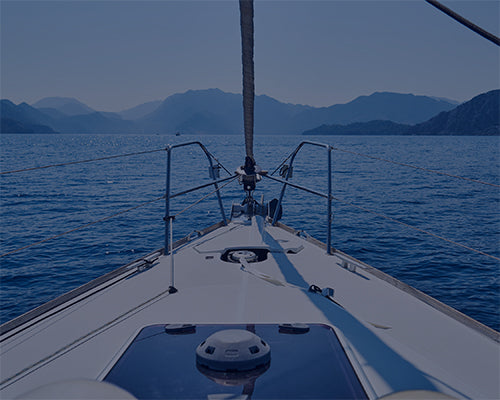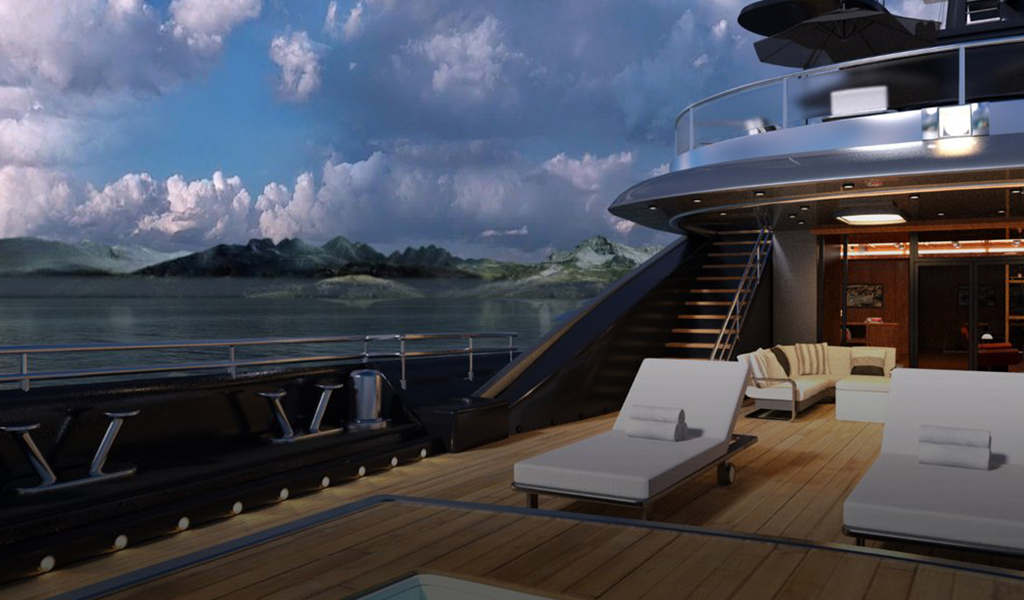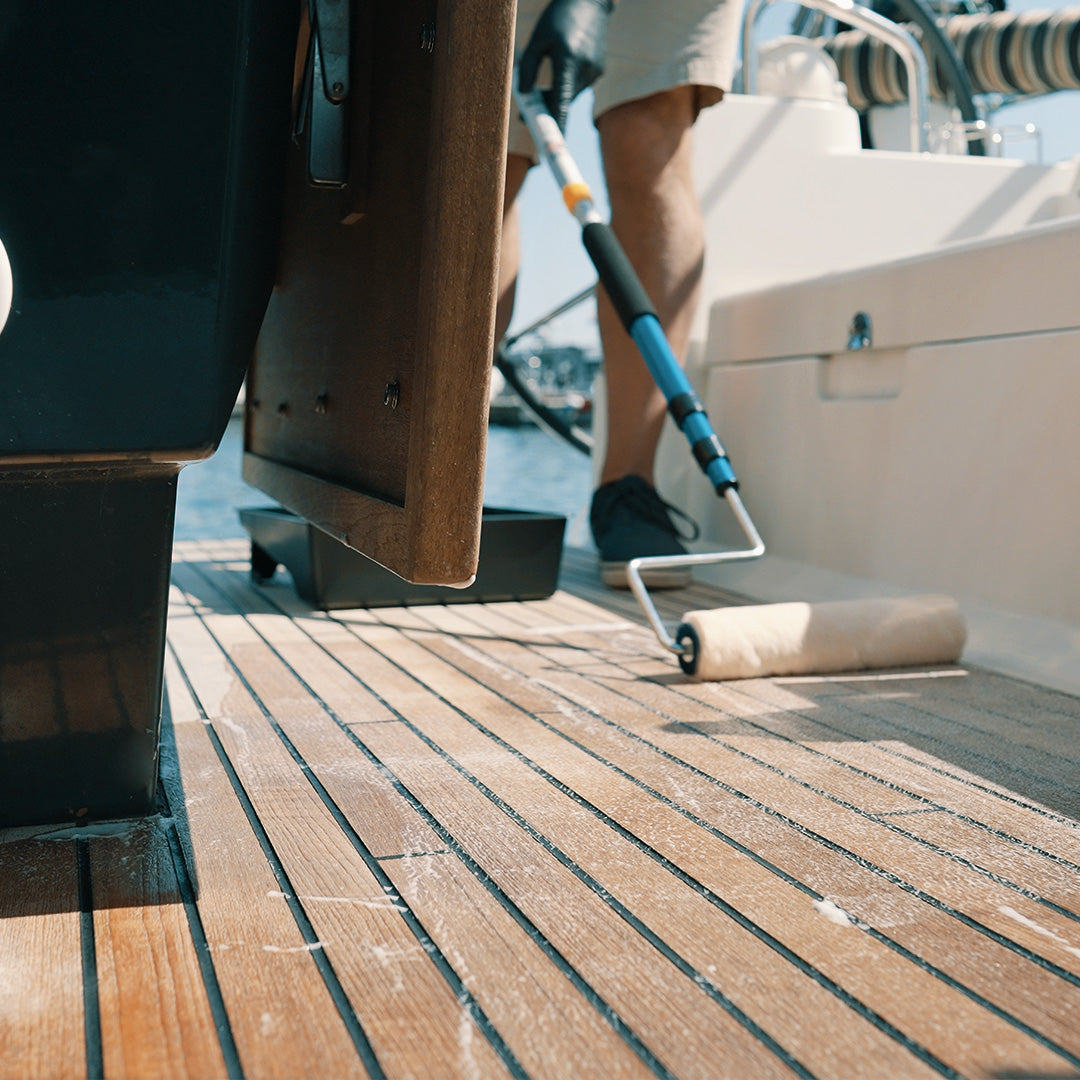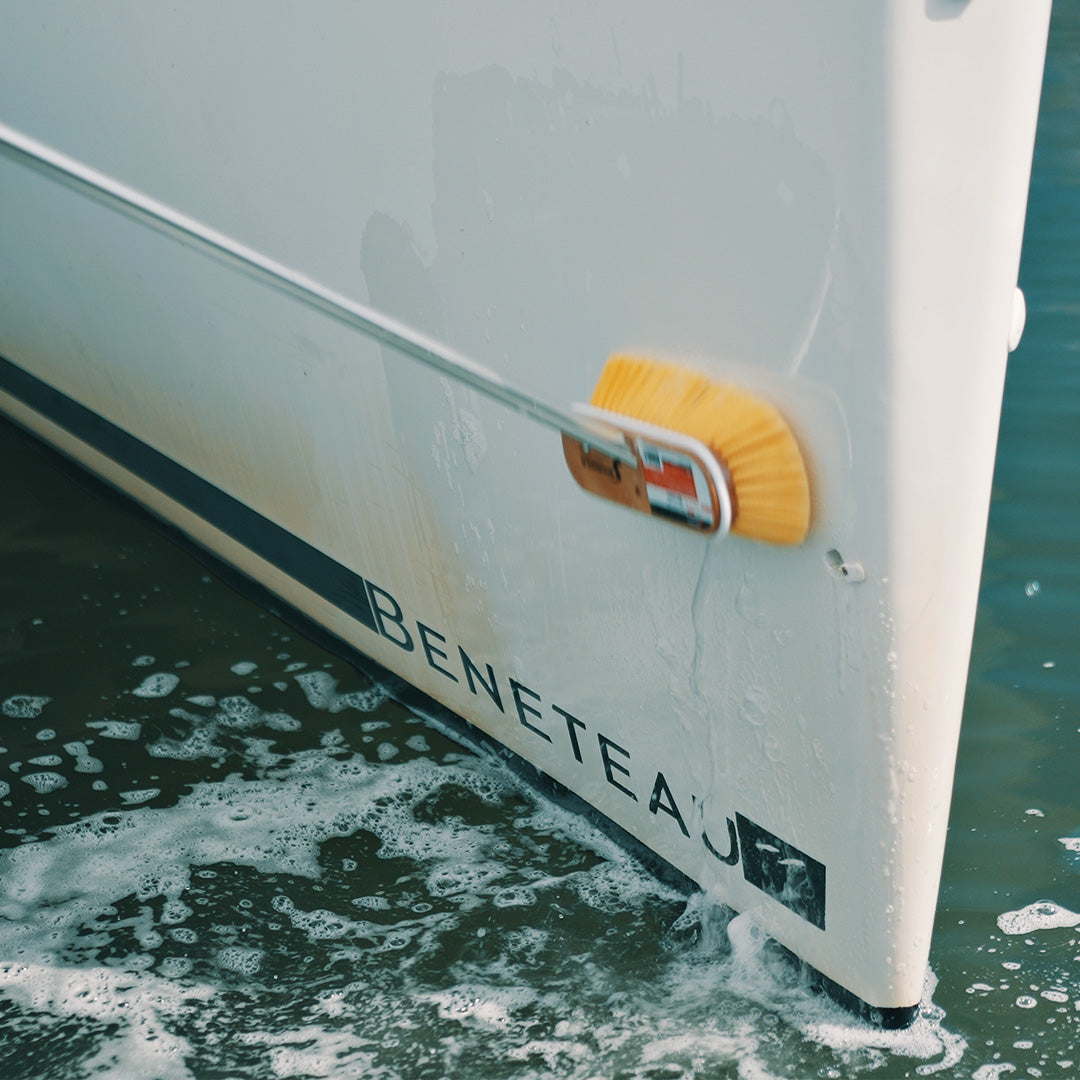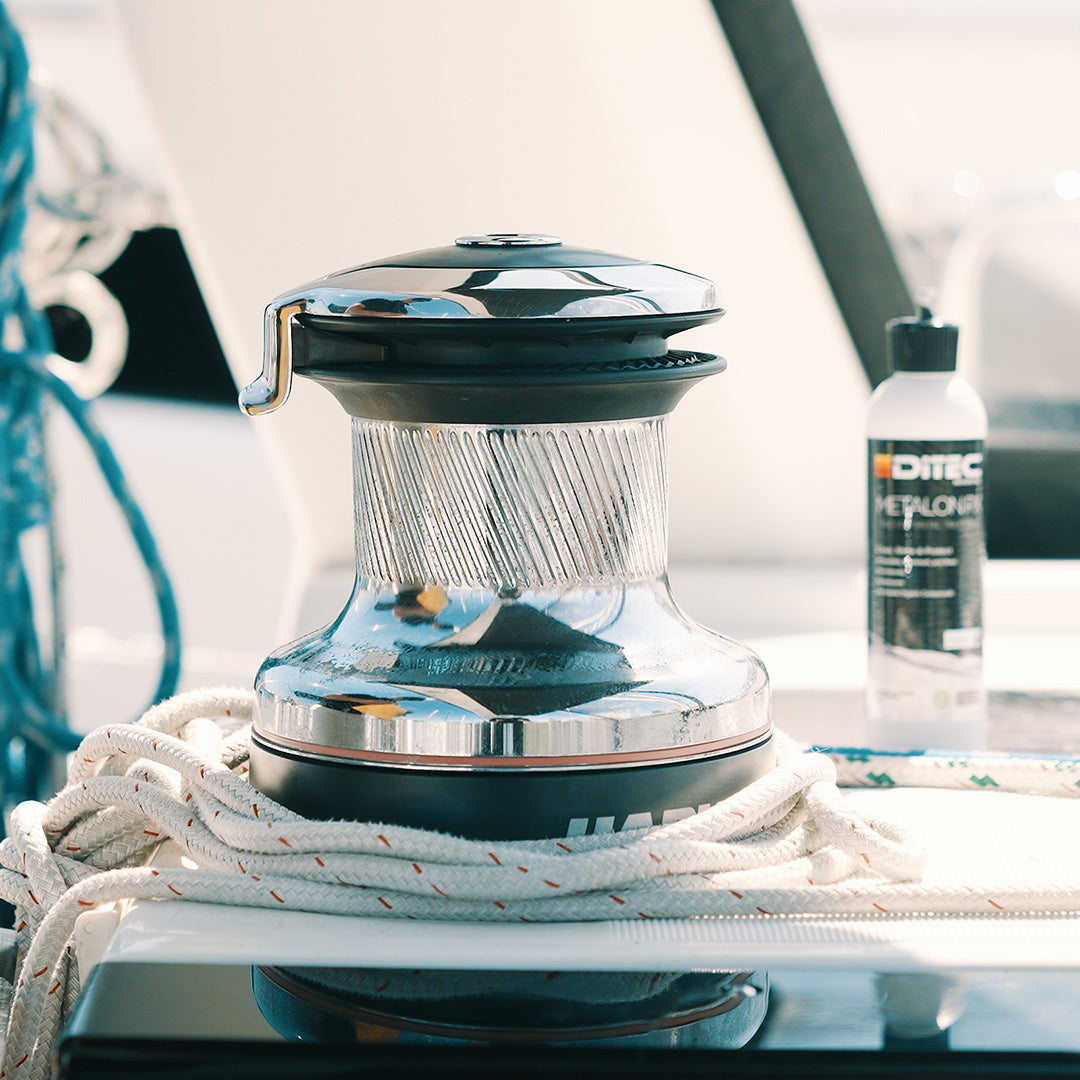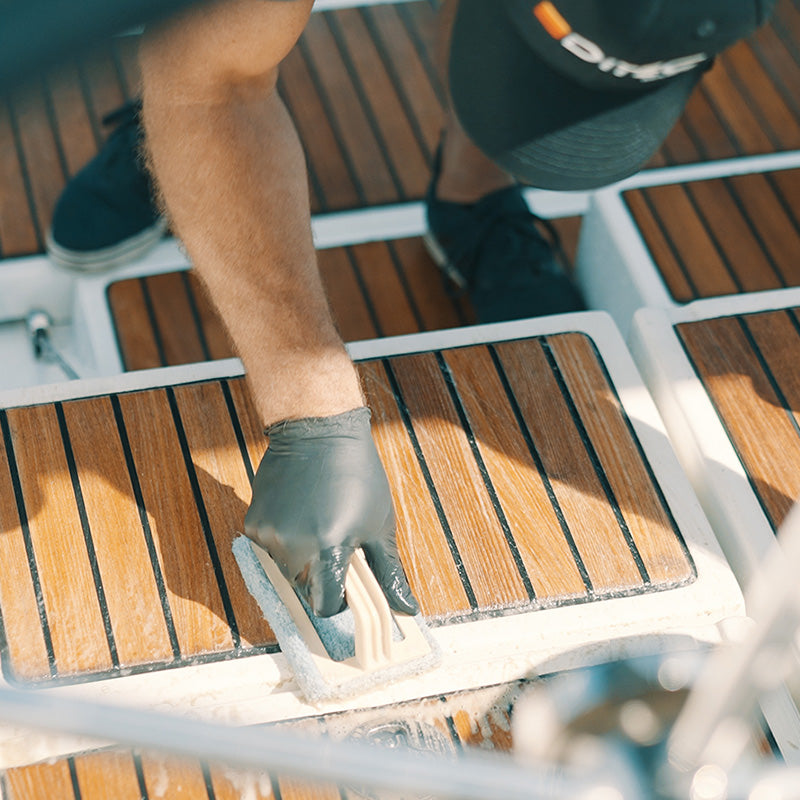Over the last 40 years, I have witnessed enormous changes in the yachting industry and its inseparable counterparts, the world’s navigable waterways. I grew up in northern Michigan in the 1970’s when a 50-foot yacht was considered enormous. I saw generations of Hatteras Yachts evolve from 53 feet to 86 feet and beyond. The 1990’s brought an influx of larger Burger and Palmer Johnson Yachts from Wisconsin, each making its maiden voyage to the yachting “promised lands” of south Florida, the Caribbean, the Mediterranean and beyond.
The yachting world is still growing rapidly in size and number each year. It wasn’t that long ago that a 50m yacht was one of the top 100 largest yachts in the world. Today, the 100th largest yacht in the world is 83m. The impact of our industry is prolific and profound by many metrics, and much is being written and discussed about the industry’s need for environmental responsibility. At the same time, there is very little discussion about the deliberate and often irresponsible actions taken to maintain yachts that have an equally prolific and profound effect on the yachts themselves. Can environmental responsibility and professional yacht maintenance co-exist?
Every yacht in the world places a demand on the environment by way of waste and chemical introduction to the world’s water systems. Exhaust, cleaning, and maintenance chemicals have an undeniable impact on the quality of our world’s navigable waters. These same pollutants also cause cumulative and irreparable damage to almost every yacht surface. All the while, the environmental and/or chemical culprits for the damage go unrecognized, because the damage is slow, it’s cumulative, and the person evaluating the yacht’s overall appearance changes regularly. An analysis of a yacht’s maintenance program explains a lot. So, let’s look at three of the most prominent examples of yacht surfaces that require regular maintenance…paint, teak, and glass, and how the damage to each of the three surfaces is interrelated.
THE BASICS: Deck maintenance products consist primarily of acids, alkali, surfactant/detergent, and solvent chemicals.
Acids are solutions with a pH of less than 7.0. Acids are effective for descaling tasks and brightening teak. Acids also lower the pH level of a wood surface which has a brightening effect.
Alkalis are soluble salts, largely of potassium or sodium carbonate that dissolve in water and have a pH greater than 7.0. In the form of hydroxides and carbonates, alkalis are effective at dissolving organic material like teak wood, bird droppings, and exhaust soot.
Surfactants are compounds that lower the surface tension of a liquid, increasing the contact between the liquid and another substance.
Detergents are surfactants or a mixture of surfactants that are partly hydrophobic and partly hydrophilic. Their dual nature facilitates the mixture of hydrophobic compounds (like oil and grease) with water, and they are used in boat soaps and many other deck maintenance products.
Solvents are substances that dissolves a solute, like oil, grease, or exhaust soot. A solvent is usually a liquid, but can also be a solid or a gas. Solvents are used as degreasers and as additives to some soaps to increase ability to break down hydrocarbons.
WHY DO YACHT COATINGS DETERIORATE SO QUICKLY?
In a 2102 article in Superyacht Report, industry experts estimated that a performance yacht coating can be expected to last anywhere from 3-6 years. This is a broad range and at the outside lifespan of 6 years, seems short. Why do the coatings deteriorate?
Most everything that falls from the sky and on to a yacht is acidic. In addition to main engine and generator exhaust soot, desirable yacht destinations are often closely situated to airports or near active cities with heavy vehicle traffic, all of which produce airborne contamination. When acidic soot, bird droppings, and other acidic contaminants rest on a painted surface, they only need the introduction of water and sunlight to start a chemical reaction with the surface. The chemical reaction of an acidic solution on yacht paint causes etching of the surface (severity depends on the pH of the acid and length of exposure on the surface).
Think of the etching like small chemical scratches. These scratches increase surface area and surface tension which creates a better binding point for the next round of contamination. At first, a pH-neutral boat soap works effectively to clean the paint. The surface damage is minor, and a moderate surfactant/detergent combination will release the dirt and soot. Unfortunately, a pH-neutral soap used to treat an acidic contaminant leaves behind a surface that is still acidic! Furthermore, acidity does not have the same efficacy in removing organic contaminants (bird droppings and oily residue) as alkalinity. The net result is increased scrubbing (which is scratching), and before long the mild soap no longer works.
The introduction of a solvent-based soap is often the next step in the downward spiral of the topcoat. Solvent based soaps are highly effective at removing soot and oily contaminants. They breakdown protective coatings like waxes or polymer sealants, and they can cause paint damage. Trace amounts of the solvent from the solvent-based boat soap are trapped by the etched paint, in drain areas, and on surfaces that are not thoroughly rinsed and dried. In the presence of water and sunlight (sound familiar), the trace solvent reacts with the topcoat and further etches the paint.
This cleaning dynamic is cumulative, and after repeated cleanings, provides an even more receptive surface for soot and other contaminants to adhere to the paint and thus increases the need for stronger chemicals like hydroxides (black streak removers) and abrasives (magic erasers) to remove the stubborn stains on the paint. This process rapidly accelerates the cumulative damage we now interpret as “loss of gloss” or “dullness”.
Enter the polishing cycle.
Many yachts choose to have their paint polished to remove the dullness (oxidation) that has been caused by improper maintenance and UV exposure. Most yachts are painted with linear polyurethane topcoats (e.g. Awlgrip) for coating durability. As linear polyurethanes cure, the resins and pigments separate, leaving the pigments at the bottom of the coating and a thin, clear resin layer at the surface. When polished, the clear resin is often broken, exposing the pigment layer.
The pigments are soft and porous, and exposing this layer compromises the longevity of the coating’s gloss retention, chemical resistance, and UV stability. Repeated polishing cycles continue to expose more and more of the pigment layer. If you haven’t realized it yet, the paint coating’s days are numbered and repaint is now an active discussion which means the net effect of improper polishing is accelerated coating deterioration.
WHY DOES YACHT TEAK DISAPPEAR?
Teak becomes embedded with dirt and oily contaminants, grayed by the sun and salt, and contaminated with mold and mildew spores. In response to the cosmetically unattractive wood, yacht crews often use highly corrosive 2-part cleaners to remove contaminants and brighten the surface. The problem is that the strong hydroxide in part 1 process dissolves the wood, to reveal a refreshed but damaged surface, with deepened grain structure. The part 2, typically phosphoric acid, merely neutralizes the hydroxide. It just so happens that there is an ancillary bleaching effect that gives the teak a renewed, bright appearance. As the grain structure deepens, the overall surface area of the deck increases exponentially. There is more surface area to hold dirt and oily contaminants, more surface to be damaged by the sun and salt, and more surface to hold moisture and develop mold and mildew.
The cumulative effect of this maintenance process is shorter and shorter intervals between necessary cleanings. A teak deck can only withstand a limited number of corrosive cleanings, before too much wood has been dissolved and the grain structure is too deep. At this point, the decks require sanding. This process adds to the cumulative damaging effect, because sanding to a smooth, tight-grained finish requires removing even more wood. Ultimately, the teak maintenance programs frequently used by yacht crews, cause significant loss in deck thickness, premature deck failure, and the net result is the need to replace the deck.
There is another negative effect. The highly alkaline and acidic 2-part cleaners are also corrosive to paint and metal. When the rinse water from cleaning a deck flows overboard and runs down the painted surfaces, it etches the paint. These streak marks look like water spots that won’t wipe off. They are chemical scar trails that become the path of least resistance with every subsequent cleaning. As a result, the scar becomes deeper and deeper. In a linear topcoat system, this scarring will eventually compromise the clear resin layer. In non-linear topcoats, the damage can be translated all the way through the paint. This dramatically shortens the service life of a yacht coating. It also reacts with metal surfaces, especially aluminum, causing scars and burns that require labor intensive polishing to remove.
WHY CAN’T I CLEAN THE WATERSPOTS OFF THE GLASS?
Glass is third in the trifecta of interrelated surface maintenance problems and deterioration. Every yacht owner wants to look through clean glass windows. Mother Nature makes this difficult, because many glass features are constantly inundated with saltwater. Yacht glass is a non-crystalline amorphous solid, based on SiO2 (silicon dioxide, or quartz) which is the primary constituent of sand. The dissolved mineral solids in saltwater (and fresh cleaning water) share a chemical affinity with the SiO2 glass compound. When salt spray or rinse water are left to dry on a glass surface in the presence of heat, oxygen, and sunlight (every good boating day), a chemical reaction occurs and trace amounts of the dissolved mineral bind with the glass.
This etching of the glass has a similar effect to chemical damage of a paint topcoat. The trace mineral creates increased surface tension, or a binding point for the next intrusion of saltwater. With glass, the continuous cycle creates a thicker and thicker layer of contamination. Acids like white vinegar are typically used to remove the “crust” or heavy deposit, but they are ineffective at removing the trace mineral. Moreover, white vinegar has a pH of 2.5! We mistakenly believe that it is safe to use, because we use it in cooking and ingest it as a component of many food products like salad dressing. These acids, when used carelessly, lead to scarring of the paint around the window frames and streaks in the paint that look like water spots but won’t clean off (sound familiar).
SO, HOW DO WE PROTECT OUR YACHTS?
Until recently, paint preservation has been limited by chemistry. Waxes, sealants, and acrylic polymers are all based on organic chemistry. They are highly affected by UV, acids, and alkali, and every yacht exists in an environment that is rich in all three. Current chemistry has evolved beyond these limitations, and advances in inorganic chemistry have been used to develop resin coatings with unparalleled durability in marine conditions. Inorganic compounds do not readily react with UV, acids, or alkali. Put simply, day-to-day yacht maintenance and environmental exposure will not readily degrade the protection offered by an inorganic resin coating.
There is one caveat! All inorganic resin coatings exhibit beneficial inorganic properties, but they are not all created equal. Coating systems that are considered ceramic or glass contain Silicon Dioxide (SiO2) or Zirconium Silicate (ZrSiO4). These chemical constituents can contaminate a paint system, typically require sanding to be removed, and add additional labor and risk when repairing or repainting a yacht. So, look for systems with base chemical constituents that make rubber and plastic, not glass. These are softer coatings, but their inorganic structure offers a coating that is repair and paint friendly.
Teak presents more of a challenge to protect and preserve, because most yacht owners love the look of freshly sanded teak. Steer clear of strong hydroxides and abrasives. As a rule of thumb, if your teak cleaning solution is continuously filling your cleaning pad with wood pulp, then the cleaner is an alkali that is dissolving the teak,
or it is an abrasive that is chemically “sanding” the teak. Look for acid replacements that eliminate the hydroxide (Step 1) and utilize surfactant/detergent cleaning action to remove the oxidation and dirt. Be careful with teak cleaning powders which are inert as a dry powder but create a hydroxide when mixed with water. These cleaning solutions can also strip wood surfaces of their natural anti-microbial properties which may cause unusual and persistent patterns of mold, mildew and/or algal growth in the teak.
Lastly, avoid coating teak decking with sealers. Exterior teak decking needs to “breathe”. When the wood surface is sealed, the surface wood can no longer expel and absorb moisture which can lead to mold, mildew and algae. Teak decks are also subjected to constant abrasion. This causes breaks in the sealer, allowing water intrusion, microbial growth, and uneven wear patterns. The net result is an undesirable finish that requires heavy chemical cleaning or sanding to remediate.
Glass is the easiest of the three surfaces to preserve, and inorganic chemistry is responsible. “Glass protection” is commonly understood as the creation of hydrophobic properties on a glass surface to make the surface water-repellent. Creating a hydrophobic surface is an important part of glass preservation; however, the longevity of the coating and the strength of the protective layer are also crucial factors for the protection of the surface. Effective preservation of a glass surface must protect the surface from mineral deposition, reduce maintenance, and make the glass look better longer.
Once trace mineral has etched the glass, the only remediation is mechanically polishing. This type of service can be performed by a yacht’s crew but should be left to professionals trained to safely remove the contamination without damaging the caulk seams or paint. Once glass is polished and all contaminants removed, there are two possible futures for the glass. The glass can be left untreated, and the etching cycle will resume, or the glass can be treated with a protective coating.
Simply applying any fatty/oily material will make a glass surface water-repellent. Waxing the glass or using a silicone-based coating will create the desired effect. Since these materials often create smears on the glass and alter the glass clarity, using oily products is not a functional solution. These are also organic materials, and they are affected by acids, alkali, and UV. Thus, they do not provide the necessary “protective” element required of the coating.
Inorganic glass coatings create water-repellency with durable protection as well. The durability of a coating can be anywhere from a few months to a year or longer, and there are numerous products available on the market today.
The single most important aspect of glass protection is preparation. Glass coating are designed to bind with glass not mineral residue, oils or dirt. If the glass surface is not clean, the protective coating will tend to bind with the surface contamination and not the glass and shorten the service life of the coating. The net result of any coating choice is the durability as a function of the annual cost of material and application labor.
Yacht paint, teak, and glass are three of the most valuable exterior surfaces of any yacht, and they deserve the same care and attention as every mechanical system and regulated maintenance protocol. Take a proactive approach to maintenance. MARPOL Annex V and the EU initiative REACH are in full force and effect, so read the Safety Data Sheets for the chemical compounds you intend to use, and don’t take the manufacturers’ claims as absolute truth. Inquire with chemical industry professionals and look for environmentally responsible chemical alternatives…they exist! Take time to test products in isolated areas to determine their efficacy and safety. Knowledge is the power to educate the industry about the necessity for change. Every yacht that develops a culture of awareness and responsibility in their maintenance program is making a meaningful step towards a global shift in attitude predicated on protecting the co-existence of professional yachting and the waterways upon which every yachting day depends.

